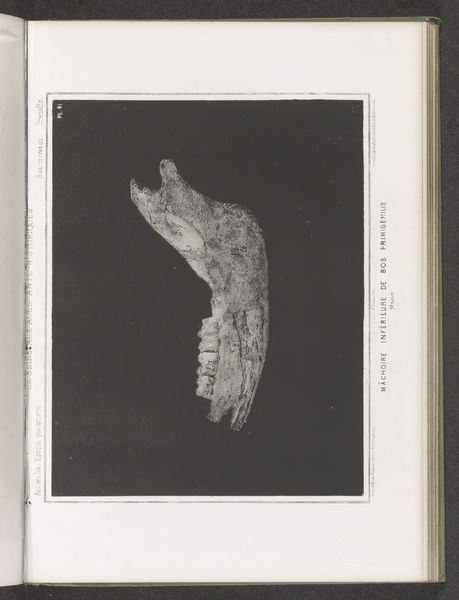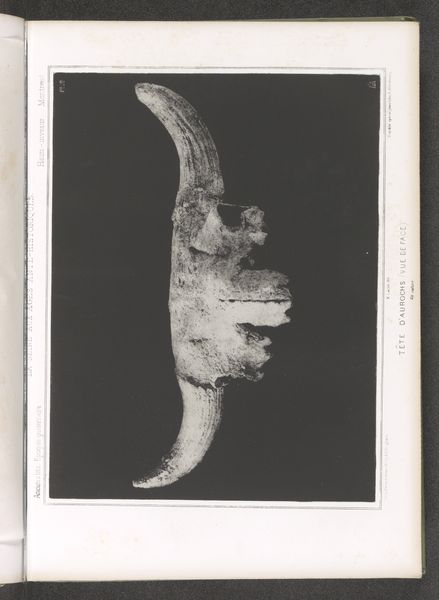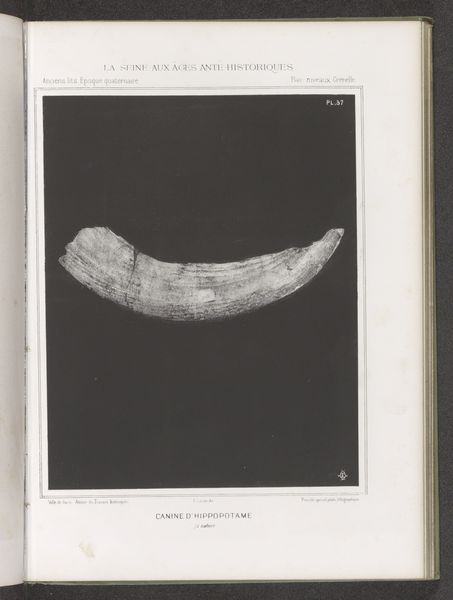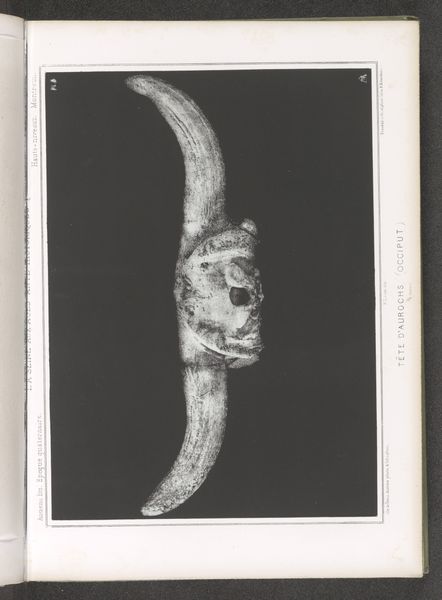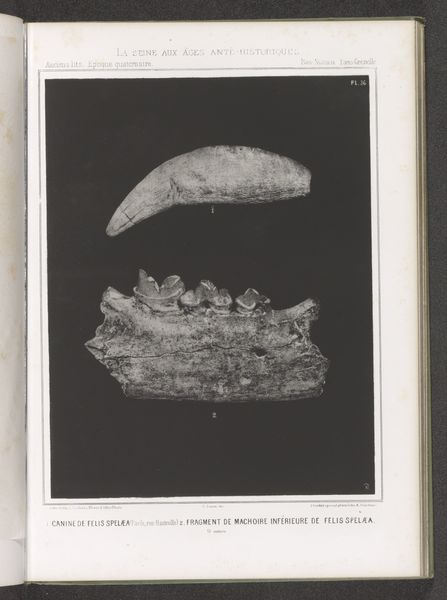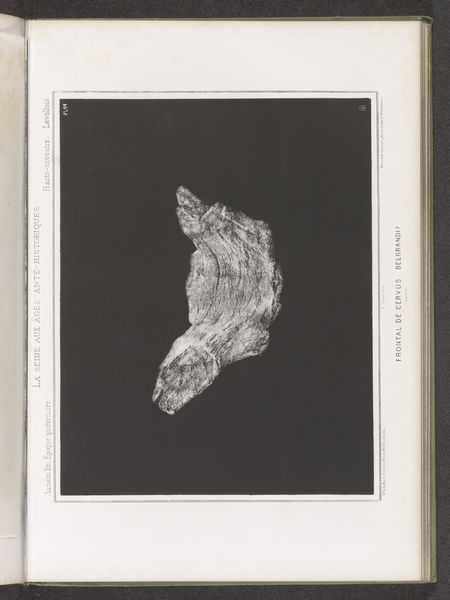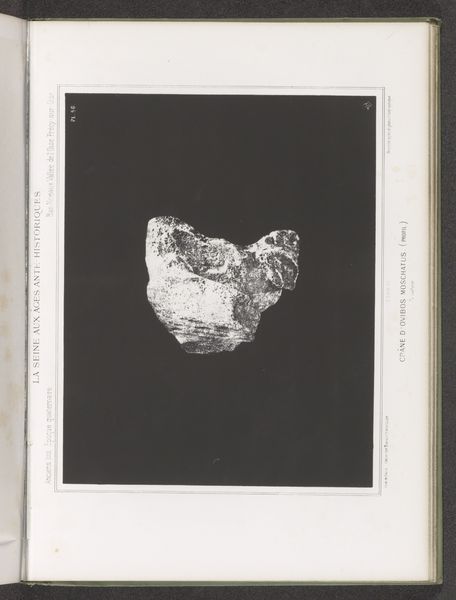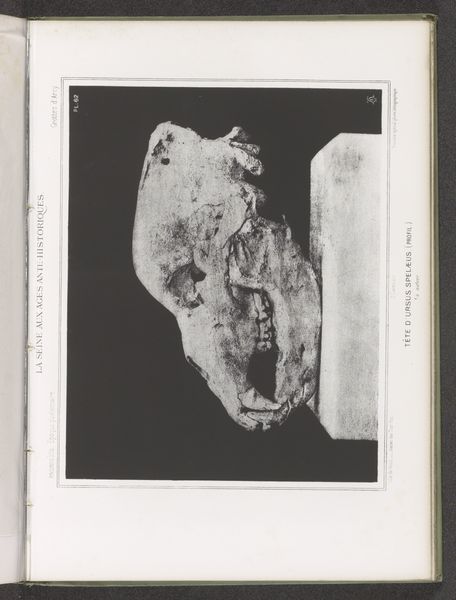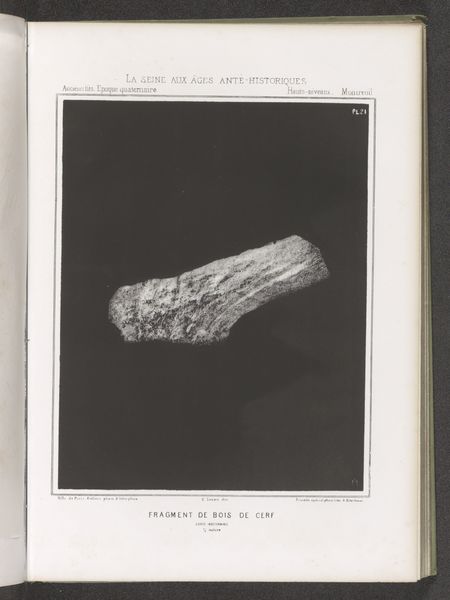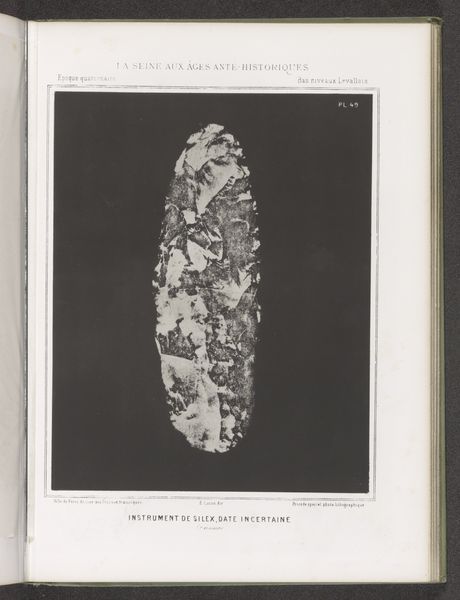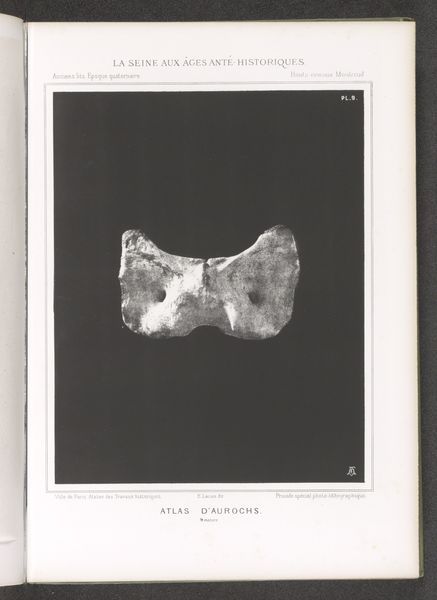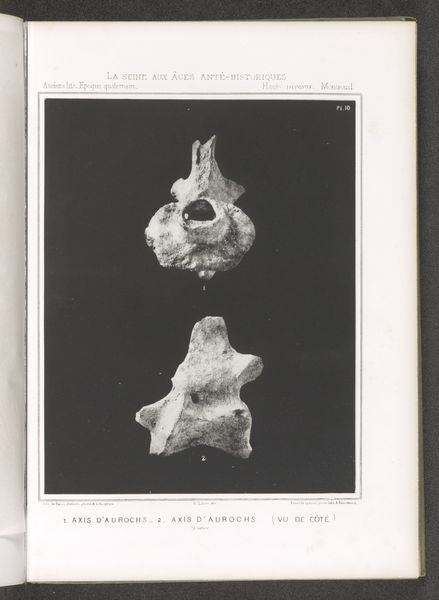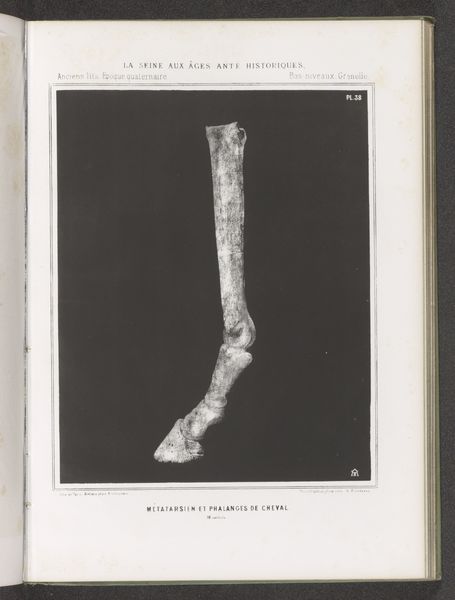
print, photography, gelatin-silver-print
#
aged paper
#
still-life-photography
#
homemade paper
#
ink paper printed
# print
#
photography
#
ancient-mediterranean
#
gelatin-silver-print
Dimensions: height 191 mm, width 242 mm
Copyright: Rijks Museum: Open Domain
Curator: This gelatin-silver print, dating back to before 1869, captures a rather stark image. It’s titled “Bot van een oeros met de kern van een hoorn” but originally written in French, meaning "Bone of an Aurochs with the core of a horn." Editor: Wow, just seeing this stark fragment… it feels almost prehistoric, doesn’t it? Like something you’d unearth on an archaeological dig. Eerie yet beautiful, this bone set against that intense dark background… what do you think it's meant to say? Curator: Considering the historical context, it could reflect 19th-century scientific fascination. The aurochs, an extinct wild ox, represented both a link to the ancient past and a commentary on loss and human impact. The meticulous photography, the almost clinical detachment in the image, hints at the scientific gaze trying to categorize and understand. This also coincides with various emerging fields of archeology and social science around this period. Editor: That makes sense, although it still whispers a different story to me. It seems incredibly fragile despite its origins, maybe because it's displayed this way...isolated. Maybe this way of recording becomes its own form of preservation or storytelling in light and shadow, no? The dark background amplifying every bump and scar. It does spark questions about fragility and time, you know? Curator: Absolutely, and that interplay between fragility and the ambition to classify reveals some underlying assumptions. This objective, supposedly neutral gaze always comes from a particular socio-political location, shaped by colonial ideas. Even the act of photographing—of claiming a sort of knowledge—was tied to power dynamics and our relationship to the natural world. Editor: So even this scientific approach couldn’t escape those underlying assumptions, huh? It seems even through objective science there are always some human traces. Editor: That makes sense and even with the stark differences in opinions, I think, as our chat unveils, we all have our unique angles, biases even that filter this piece and I just learned about how history shaped it. How insightful. Curator: Exactly, every viewing is filtered through an ever-shifting array of knowledge and assumptions. Editor: Thanks for broadening how I think of photography and I’ll keep that in mind, so I'll view every other pieces I’ll stumble on this awareness. Curator: That's the spirit! Thanks!
Comments
No comments
Be the first to comment and join the conversation on the ultimate creative platform.
